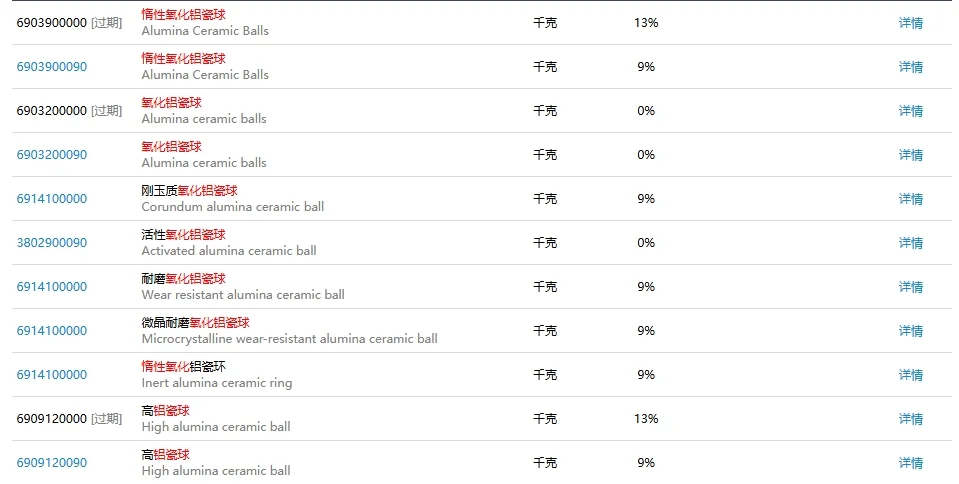What is the HS code for ceramic balls?
What is the HS bat code of the ceramic ball? What is its tax refund? Which ones have expired? Here we will give you all the answers。
HS code for ceramic balls
6903900000 [expired] Alumina Ceramic Balls 13%
6903900090 Alumina Ceramic Balls 9%
6903200000 [expired] Alumina ceramic balls 0%
6903200090 Alumina ceramic balls 0%
6914100000 Corundum alumina ceramic ball 9%
3802900090 Activated alumina ceramic ball 0%
6914100000 Wear resistant alumina ceramic ball 9%
Where can I find the accurate HS code for ceramic balls?
You can through the Chinese customs website (http://www.customs.gov.cn) or the Chinese import and export customs enterprise credit information publicity platform (http://credit.customs.gov.cn) of ceramic ball accurate HS code, Just enter the product name or other keywords in the search box of the corresponding website. You can also use professional query websites such as HS Code query network (http://www.hsbianma.com) and customs code network (https://ihscode.com). You can also refer to the “Customs Import and Export Tariff of the People’s Republic of China” and other customs coding bibles or manuals published by China Customs Press. In addition, consulting qualified customs brokers or freight forwarders, as well as ceramic importers’ industry associations or chambers of commerce, is also a feasible approach.

How should I determine the specific HS code of the ceramic ball?
To determine the specific HS code of ceramic balls, one can first follow the six-step classification method recommended by the World Customs Organization to clarify the specific characteristics of the ceramic balls, such as material (whether it is porcelain or ceramic), application (whether it is for bearings, laboratories, decoration, etc.), Mohs hardness, processing technology, etc. Then look for the possible applicable chapters. Ceramic balls are usually in Chapter 69 “Ceramic Products”. Then, refer to the chapter notes and class notes, eliminate the items that do not match, and then review the item provisions and related subitems to see which one better conforms to the characteristics of ceramic balls. Finally, the general classification rules, such as Rules One to six, are applied to determine the final HS code. For instance, ceramic balls used for bearings can be classified as 6909.1100, laboratory ceramic balls with a Mohs hardness of ≥9 can be classified as 6909.1200, ordinary ceramic balls can be classified as 6914.1000, ceramic balls made of pottery can be classified as 6914.9000, and decorative ceramic balls can be classified as 6913.1000.

What do the first four digits of the HS code for ceramic balls represent?
The first four digits of the HS code for ceramic balls represent “item”. Among them, the first and second digits represent “zhang”, and the third and fourth digits are further subdivided on the basis of “zhang” to represent “mu”. For instance, the HS code 6909120000 for ceramic balls indicates that the first two digits “69” represent Chapter 69 “Ceramic Products”, while the third and fourth digits “09” represent the category of “Porcelain for laboratory, chemical or other technical purposes” within this chapter.


